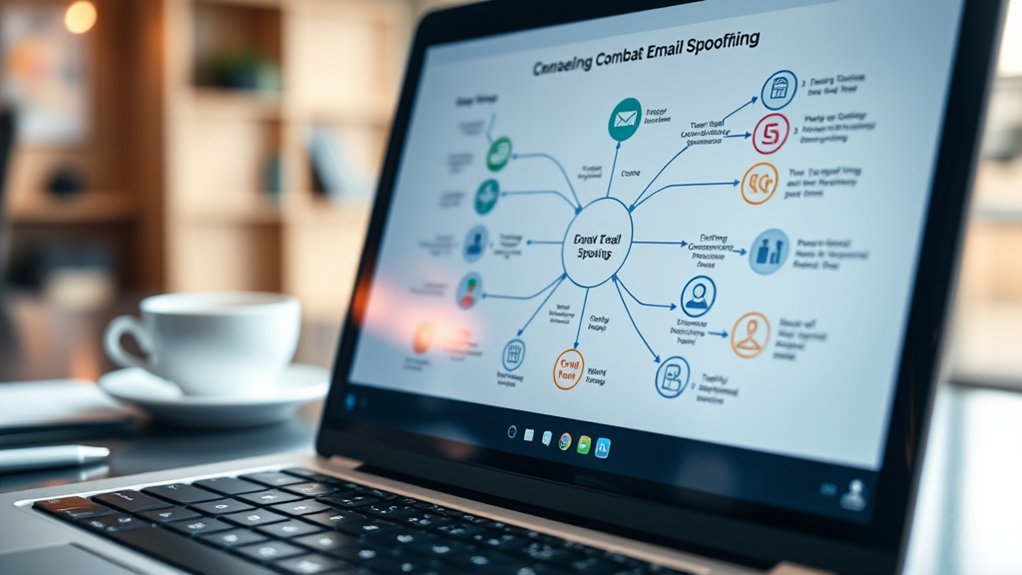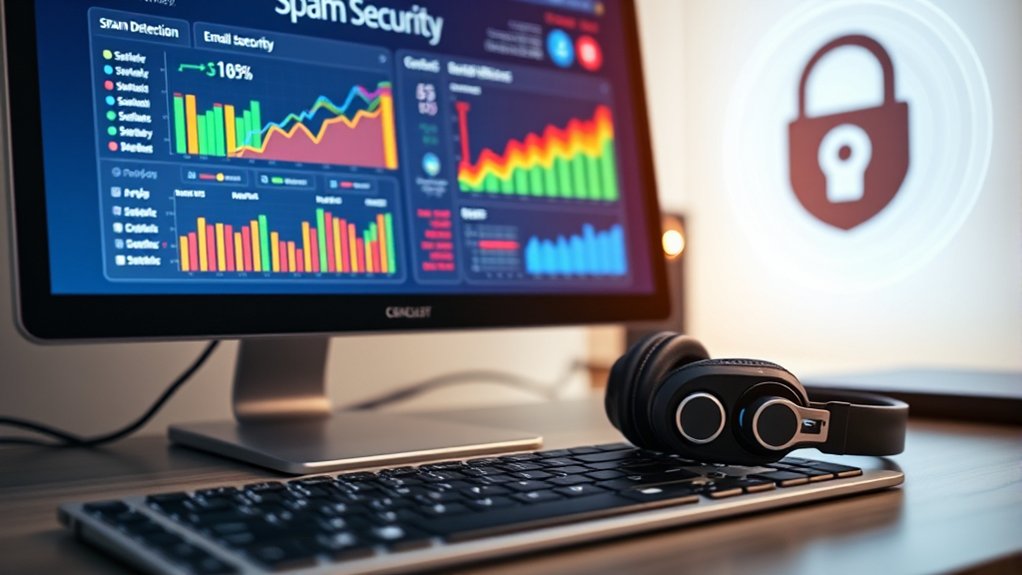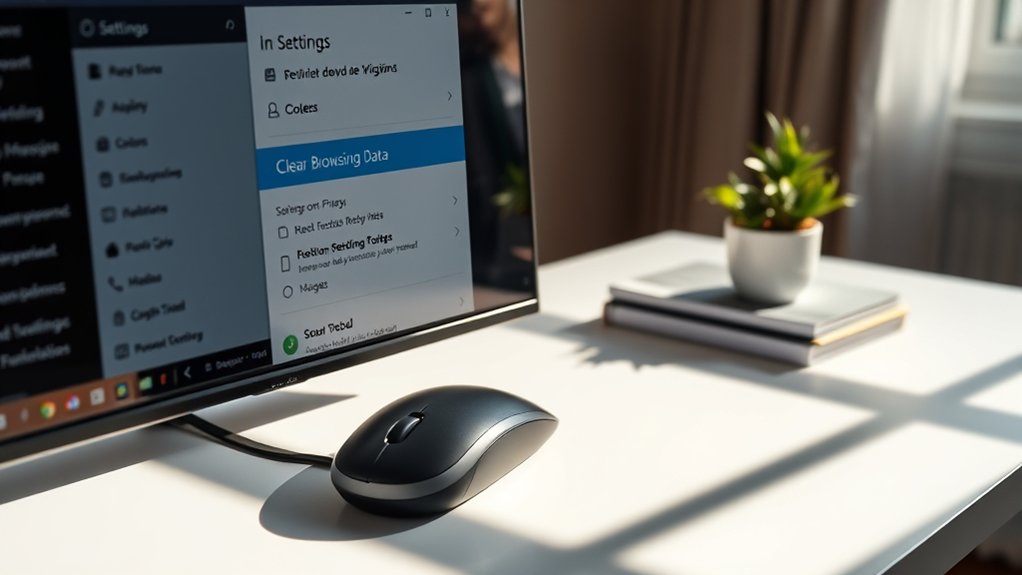To stop email spoofing, it is essential to implement strong security measures. Adopting email authentication protocols, such as Sender Policy Framework (SPF) and Domain Keys Identified Mail (DKIM), helps validate sender identities. Studies show that educating users on recognizing spoofing tactics notably improves awareness. Furthermore, securing accounts with multi-factor authentication (MFA) and employing complex passwords are critical. Organizations are encouraged to promote a culture of security among their teams, which mitigates the risks associated with spoofing emails and encourages vigilance against potential threats. More insights can further strengthen security strategies.

Email spoofing, a deceptive practice involving the forgery of sender information, presents considerable risks to both individuals and organizations. This method exploits vulnerabilities in the Simple Mail Transfer Protocol (SMTP), which lacks built-in authentication features, making it relatively easy for attackers to manipulate email headers. Approximately 3.1 billion domain spoofing emails are delivered daily, highlighting the pervasive nature of this threat.
Often, spoofing is a precursor to phishing attacks and spam campaigns, targeting unsuspecting individuals and businesses alike.
To effectively recognize spoofed emails, users should scrutinize email headers for discrepancies that may reveal forgeries. Moreover, unusual email addresses—often with misspellings or unfamiliar domain names—can serve as red flags. Communicating in generic terms or using urgent language are tactics frequently employed by spoofers to create pressure and confusion. Attackers may likewise use legitimate domains to further deceive their targets. Recognizing the importance of email authentication methods can greatly enhance your ability to detect and prevent spoofing attempts. Additionally, leveraging top antivirus programs can provide an extra layer of security against malwares that may capitalize on such spoofing techniques.
Users should be vigilant for discrepancies in email headers and unusual addresses to detect potential spoofing attempts.
Mitigating the risk of email spoofing can be achieved through the implementation of strong email authentication protocols. The Sender Policy Framework (SPF) establishes guidelines for validating the IP addresses authorized to send emails from specific domains. In the same way, Domain Keys Identified Mail (DKIM) utilizes cryptographic keys to secure integrity and authenticity, and Domain-based Message Authentication, Reporting and Conformance (DMARC) combines SPF and DKIM to improve overall security.
Adoption and compliance with these protocols are crucial for organizations aiming to protect sensitive information effectively.
Further measures include securing email accounts with multi-factor authentication (MFA), utilizing strong, complex passwords, and regularly updating software to protect against vulnerabilities. Opting for secure email providers that prioritize security is equally important. Inbox organization tools help manage spam, and strong filters can minimize the number of spoofed emails reaching users’ inboxes.
Lastly, cultivating awareness through continuous training on recognizing spoofing tactics and encouraging the reporting of suspicious emails can empower users to protect themselves. By implementing these strategies, organizations and individuals can markedly reduce the risks associated with email spoofing, creating safer communication environments.
Frequently Asked Questions
What Is the Definition of Email Spoofing?
Email spoofing represents a cyberattack whereby an individual forges sender information in emails, creating the illusion of an authentic source.
This tactic is notoriously employed in phishing campaigns, allowing attackers to deceive recipients into divulging sensitive information.
Exploiting the vulnerabilities of the Simple Mail Transfer Protocol (SMTP), spoofing does not require direct access to the sender’s account.
It poses significant security challenges for both individuals and organizations, emphasizing the necessity for effective email authentication measures.
How Can I Identify a Spoofed Email?
Identifying a spoofed email involves evaluating several critical characteristics. Recipients should be vigilant for unusual urgency, generic greetings, and poor grammar, all of which may signal fraud.
Furthermore, examining email headers for mismatches between sender addresses and the “Return-Path” can provide insights.
Experts recommend validating protocols such as SPF, DKIM, and DMARC, as their absence often indicates spoofing.
In the end, thorough inspection and skepticism are vital in distinguishing genuine emails from malicious attempts.
Are Free Email Services More Prone to Spoofing?
Free email services exhibit a heightened vulnerability to spoofing because of their widespread adoption and insufficient security measures.
Research indicates that attackers frequently exploit these platforms, using spoofed domains in phishing campaigns, particularly targeting sectors like education and government.
For instance, advanced threat groups, such as GreenSpot, have increasingly utilized these services for sophisticated attacks.
Coupled with technical vulnerabilities, this trend necessitates urgent implementation of security protocols like SPF, DKIM, and DMARC to mitigate risks.
What Are Common Spoofing Tactics Used by Hackers?
Common spoofing tactics employed by hackers include forging “From” fields to mimic trusted sources, manipulating reply addresses, and using compromised domains to improve believability.
Attackers often impersonate legitimate entities, such as banks, exploiting urgency and social engineering to prompt quick actions.
Furthermore, they distribute malware through attachments, conduct financial theft by tricking users, and execute business email compromises to manipulate transactions, demonstrating the sophisticated methods of deception prevalent in modern cyber threats.
Can Antivirus Software Prevent Email Spoofing?
Antivirus software does not prevent email spoofing, as its primary function revolves around detecting malware and phishing attempts rather than verifying sender authenticity.
Email spoofing involves falsifying sender identities, requiring specific authentication protocols like SPF, DKIM, and DMARC for effective prevention.
Research indicates that reliance on antivirus alone leaves vulnerabilities, necessitating advanced email security solutions to address spoofing thoroughly.
Experts recommend integrating these protocols to greatly improve email security measures.








